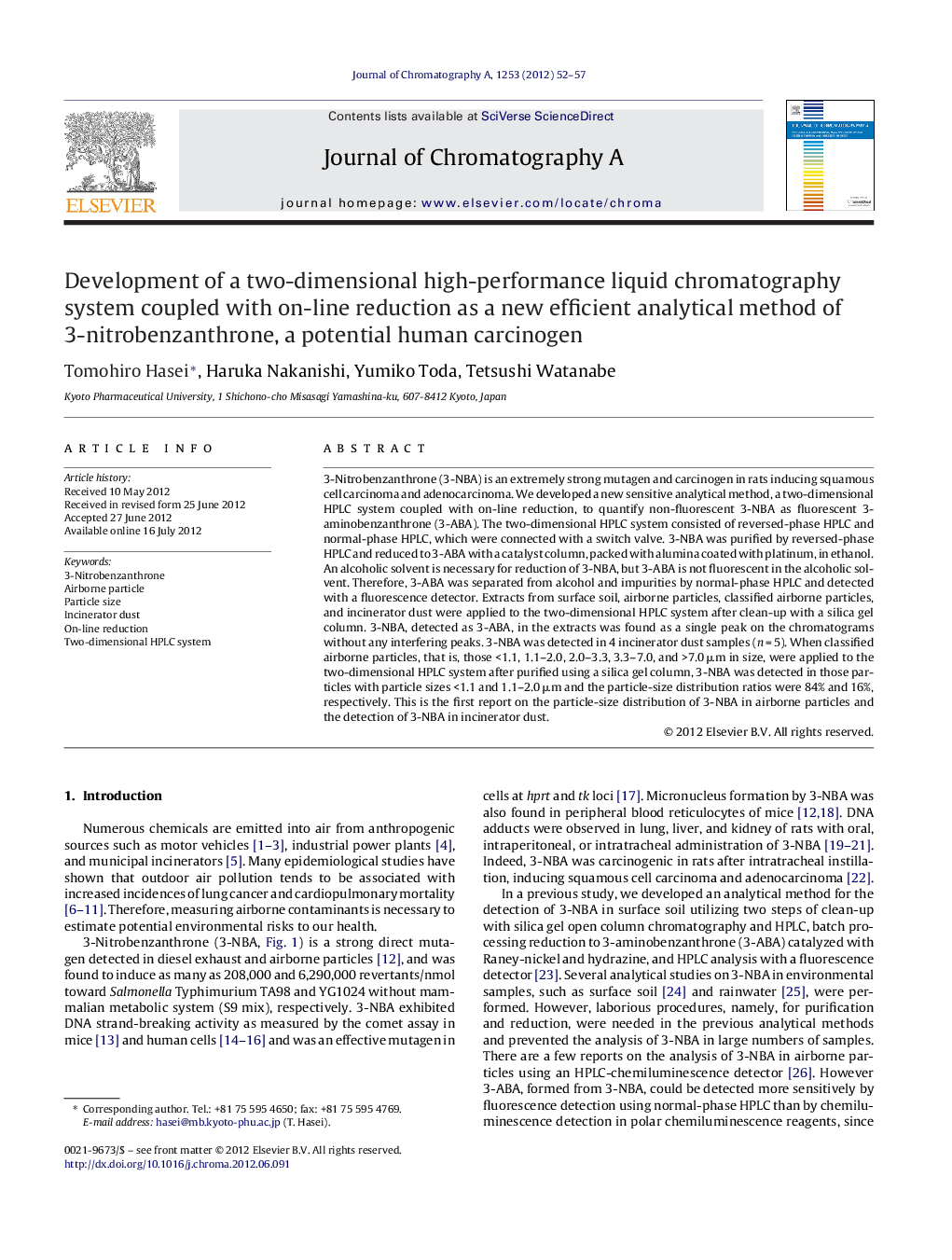| Article ID | Journal | Published Year | Pages | File Type |
|---|---|---|---|---|
| 1200518 | Journal of Chromatography A | 2012 | 6 Pages |
3-Nitrobenzanthrone (3-NBA) is an extremely strong mutagen and carcinogen in rats inducing squamous cell carcinoma and adenocarcinoma. We developed a new sensitive analytical method, a two-dimensional HPLC system coupled with on-line reduction, to quantify non-fluorescent 3-NBA as fluorescent 3-aminobenzanthrone (3-ABA). The two-dimensional HPLC system consisted of reversed-phase HPLC and normal-phase HPLC, which were connected with a switch valve. 3-NBA was purified by reversed-phase HPLC and reduced to 3-ABA with a catalyst column, packed with alumina coated with platinum, in ethanol. An alcoholic solvent is necessary for reduction of 3-NBA, but 3-ABA is not fluorescent in the alcoholic solvent. Therefore, 3-ABA was separated from alcohol and impurities by normal-phase HPLC and detected with a fluorescence detector. Extracts from surface soil, airborne particles, classified airborne particles, and incinerator dust were applied to the two-dimensional HPLC system after clean-up with a silica gel column. 3-NBA, detected as 3-ABA, in the extracts was found as a single peak on the chromatograms without any interfering peaks. 3-NBA was detected in 4 incinerator dust samples (n = 5). When classified airborne particles, that is, those <1.1, 1.1–2.0, 2.0–3.3, 3.3–7.0, and >7.0 μm in size, were applied to the two-dimensional HPLC system after purified using a silica gel column, 3-NBA was detected in those particles with particle sizes <1.1 and 1.1–2.0 μm and the particle-size distribution ratios were 84% and 16%, respectively. This is the first report on the particle-size distribution of 3-NBA in airborne particles and the detection of 3-NBA in incinerator dust.
► We developed new effective analytical method to quantify 3-NBA in environment. ► Two-dimensional HPLC system consisted of reversed- and normal-phase HPLC. ► First report on particle-size distribution of 3-NBA in airborne particles. ► First report on determination of 3-NBA in incinerator dust as a suspected source.
